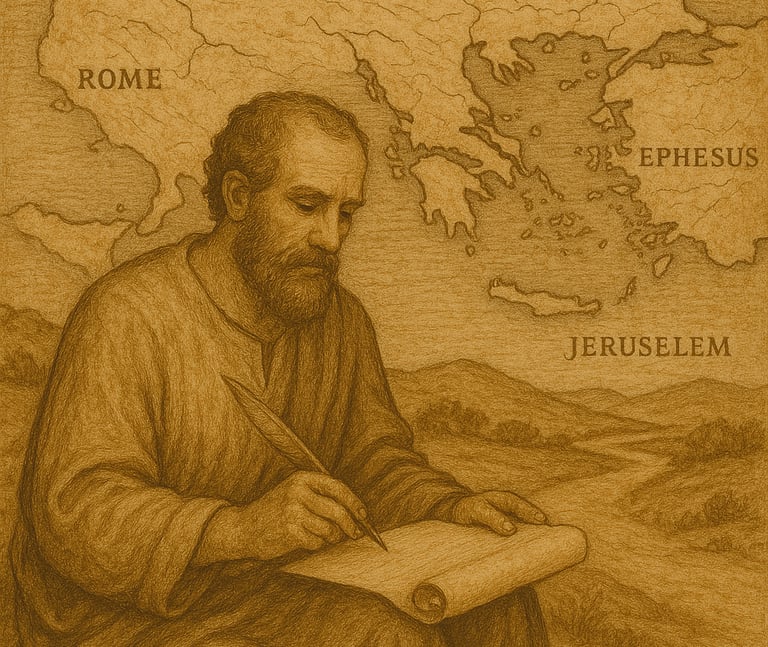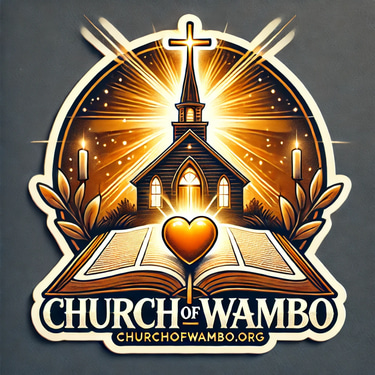A Fresh Look at the New Testament Part Four
🏛️ How Paul’s Version of Christianity Took Over
And why the rest got pushed to the sidelines
So, by now, you’ve seen that early Christianity was way more diverse than most people realize.
There were:
Jesus-followers who focused on love, justice, and community.
Jewish Christians who followed the Law and believed in Jesus.
Mystics and Gnostics looking inward for spiritual awakening.
And of course, Paul, preaching faith in Christ crucified, no Law required.
So… how did his version become the version?
Let’s walk through it.
💥 Paul’s Message Was Simple. And Scalable.
Unlike Jesus, who taught in parables and lived his message out loud, Paul boiled it all down to this:
You’re saved by faith in Jesus’ death and resurrection.
But wait, there's more, Paul says, "The acts of the flesh are obvious: sexual immorality, impurity and debauchery; idolatry and witchcraft; hatred, discord, jealousy, fits of rage, selfish ambition, dissensions, factions and envy; drunkenness, orgies, and the like. I warn you, as I did before, that those who live like this will not inherit the kingdom of God," Galatians 5:19.
So, his message is not quite as clear as many make it out to be, i.e., faith in Jesus.
It was a clean, easy-to-preach package, especially to non-Jewish audiences in the Roman Empire. Believe in Jesus and you are saved. How can you know for sure that you will go to heaven when you die? "Believe in the Lord Jesus Christ, and you will be saved," Acts 16:31. But it turns out not to be true.
🏛️ The Roman Empire Preferred Order
When Christianity became legal under Emperor Constantine, the empire wanted a religion that was:
Clear
Controllable
Theologically uniform
Guess whose theology fit that bill? Paul’s.
Gnostic mysticism? Too abstract.
Jesus-style revolution? Too threatening.
Women-led house churches? Too decentralized.
But Paul’s model? Structured. Male-led. Doctrine-heavy.
Perfect for building an institution.
📬 Paul’s Letters Were Copied and Re-Copied
The early Church preserved Paul’s letters like holy treasures. They were copied, passed around, and eventually became scripture.
But other writings?
Mary Magdalene’s gospel? Hidden.
Thomas? Buried.
Gnostic works? Burned.
The more power the Church gained, the more it shaped the canon to match Paul’s theology.
By the 4th century, Christianity was a state religion with a “correct” belief system. And that system? Heavily Pauline.
🤔 Was Paul Wrong?
Jesus preached radical love and humility.
Paul preached justification and salvation through faith.
Jesus said, “Love your enemies.”
Paul said, “Obey your leaders and submit to authority.”
Jesus emphasized living the Kingdom now.
Paul looked ahead to a heavenly reward.
It’s not that Paul was evil.
But his version of Christianity became dominant, and in the process, the rest was pushed out.
💡 Why This Matters
Because if you’ve ever felt disconnected from churchy religion…
If you’ve ever wondered why the faith doesn’t feel like Jesus anymore?
It might be because Paul’s theology became the foundation, while Jesus’ teachings were backgrounded.
But now you know. And knowing opens the door to rediscovering the original path.
🌱 What This All Means for Us Today
Why any of this still matters and what you can do with it
So, maybe you’ve made it this far and thought:
“Cool history lesson, but what does this have to do with me?”
Totally fair question.
And here’s the real talk:
This isn’t just about ancient scrolls and old arguments.
It’s about how we find truth, meaning, and connection today, in a world that’s still trying to figure it all out.
🚧 First of All: It’s Okay to Question
If you’ve ever felt confused by religion…
If you’ve ever wondered why some churches feel more about rules than love…
If you’ve ever thought, “This doesn’t sound like Jesus…”
You’re not crazy.
You’re not alone.
And you’re not being unfaithful.
You’re actually doing what the earliest Jesus-followers did:
asking questions, testing what’s real, and going deeper.
🧭 What We’ve Learned So Far
Here’s a quick recap of what you now know:
✅ The New Testament wasn’t always “The New Testament.” It took centuries to shape.
✅ There were many different kinds of early Christians, some mystical, some political, some grassroots, some rigid.
✅ Paul’s version of Christianity “won” because it was clean, powerful, and easy to institutionalize.
✅ Jesus’ original message was radical, humble, love-filled, and often inconvenient to those in power.
✅ Many of the people who best lived that message, especially women and mystics, were erased from the spotlight.
✅ And some of the most beautiful teachings of Jesus are hidden in texts the Church tried to bury.
💥 So Now What?
That depends on you.
This isn’t about choosing “Paul vs. Jesus.”
It’s about reconnecting with the heart of the message and reclaiming your spiritual curiosity.
You can:
🌿 Go read the Gospels of Matthew, Mark, Luke, and John with fresh eyes
📜 Explore non-canonical texts like Thomas or Mary for extra insight
🕯️ Reflect on what it means to actually follow Jesus’ way, not just believe in a system
💬 Start real conversations about faith, history, and truth
❤️ Choose love, humility, and justice, every single day.
✨ The Bottom Line?
Jesus wasn’t trying to start a religion.
He was trying to start a movement.
One where the poor were lifted, the proud were humbled, and love ruled everything.
That movement didn’t die. It just got buried under politics, power, and theology.
🙏 Final Thought
If anything, here resonated, even just a little, then keep going.
Keep reading. Keep questioning. Keep loving.
Because the real path of Jesus?
It’s not about having all the answers.
It’s about walking humbly, loving boldly, and never giving up on the world.
FAQ
1. Was Paul trying to distort Jesus’ message?
Not necessarily. Paul had a powerful spiritual experience and interpreted it through his own cultural and theological lens. But it’s fair to say his focus was different from Jesus’, and over time, it overshadowed Jesus' original teachings.
2. Why did the Church exclude other gospels like Thomas and Mary?
Mainly because they didn’t align with the theology and structure the emerging Church was promoting. They were seen as too mystical, too non-conformist, and too empowering to individuals.
3. Are the “lost gospels” considered reliable?
They’re as ancient and authentic as many canonical texts. While they may not align with Church doctrine, they offer valuable insight into how diverse and vibrant early Christianity truly was.
4. Can I be a Christian and still question Paul’s teachings?
Absolutely. Faith that asks questions is often stronger than faith that does not question. Jesus welcomed doubt, questions, and seekers.
5. Where should I start if I want to rediscover Jesus’ real teachings?
Start with the Sermon on the Mount (Matthew 5–7). Read the Gospel of Luke, and then explore the Gospel of Thomas, the Gospel of Mary Magdalene, the Gospel of Phillip and other documents recently discovered in the Nag Hammadi Library, the Dead Sea Scrolls, and the Apocrypha, writings that were kept secret because they were vehicles of esoteric knowledge considered too profound or too sacred to be disclosed to anyone other than the initiated.
🧠 Paul Was a Brilliant Strategist
Love him or not, you’ve got to give Paul credit: he was smart, persuasive, and relentless.
He knew how to:
Frame complex theology in a way people could latch onto.
Build tight-knit communities.
Use letters to stay connected and influence churches all over the Roman world.
And he wasn’t afraid to call out anyone who disagreed including Peter, James, and other followers of Jesus.


🕊️ Did You Know?
The first Christian writing we have isn’t a Gospel, it’s 1 Thessalonians, one of Paul’s letters.
His version of Jesus came before the stories about Jesus were written down.
🕯️ Hidden History
At the Council of Nicaea (325 CE), Church leaders voted on key doctrines including whether Jesus was “fully God.”
Paul’s influence helped shape what became “orthodox” Christianity.
info@churchofwambo.org
© SDBEST LLC, 2025. All rights reserved.
